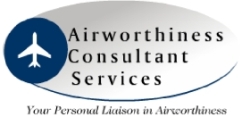
Airworthiness Training
Introduction
This training program is intended for all levels of aviation
maintenance personnel. The idea is to share 16 years of experience
as an FAA Inspector by informing on the subjects presented. The
objective of the program is to reduce non compliance regulatory
issues by providing technicians with knowledge and references of the
subjects presented. These references will facilitate the technician
in conducting additional research on the subjects presented to
further enhance their knowledge on their own. This will be the most
significant long term benefit. Our training program will provide
technicians with more knowledge of regulatory requirements and
ensure they remain in compliance.
ICAO, Aviation Law, Regulations and
FAA Policy
Role of ICAO on aviation safety
Information on Aviation Law and Regulations
An explanation of the different maintenance regulations
The most problematic regulations for maintenance personnel
How to recognize mandatory regulations and their applicability
Airframe & Powerplant (A&P)
Certification Procedure and Requirements
An explanation of the process in obtaining the license
How to prepare for the interview to obtain the required
authorization to take the exams, one of the most critical steps of
the process
The best method to prepare for the exams
Information on the cost and the time required to take the exams
References on the regulations related to the license and the
privilege of the license
Internet information: How to locate a testing center to take the
exams and how to locate an FAA office to schedule an appointment for
the interview with an FAA Inspector
Inspection
Authorization (IA) Certification Procedure and Requirements
Information on the IA certificate and the certification
requirements
References on the regulations related to the certificate and the
privilege of the certificate
Type Certificate
Importance of the Type Certificate and its role with airworthiness
The reasons a mechanic should review the Type Certificate when
performing an aircraft inspection
Several examples of a Type Certificate will be shown and the most
significant sections will be covered
The recommended source for obtaining a type certificate as well as
its benefit.
Airworthiness
Significance of the term airworthiness
Several references in Aviation Law, Regulations and other FAA
policy documents
This will provide the mechanic with a better understanding on the
use of the term airworthiness when accomplishing an aircraft
inspection
Airworthiness Directives (AD's)
The mechanics responsibility on AD compliance
The responsibility of the operator and the pilot on compliance of
the ADs
An explanation on the different parts of an AD, as well as
information on how to resolve interpretation problems with the AD
The best recommended method of documenting and controlling the
compliance records of ADs. The benefit to the mechanic of obtaining
the ADs from the FAA web site
An example of how to accomplish the research of ADs applicable to
an aircraft
The relationship with ADs and the airworthiness of the aircraft
Guidance on obtaining an alternate means of AD compliance
The Export Program
Explanation on how the FAA certifies the airworthiness of products
to be exported
The FAAs internal quality control over the program
The best sequence on the process of exporting an aircraft
The operators benefit of ensuring the quality of parts
Regulations and internal FAA policy on the program
Knowledge of the program will help the operator in preventing
problems during the purchase and import process of an aircraft.
Maintenance Records Entries
Examples of different required maintenance documentation
Regulatory references for the required elements
Examples of different forms of maintenance documentation: FAA Form
337, FAA Form 8130-3, FAA Form 8110 and the M or D report.
Suspected Unapproved Parts (SUPs)
What is an approved part
What is an unapproved part
What is a Suspected Unapproved Part
How to report a SUPs
How to reduce SUPs problems
Major Repairs
and Alterations
What is a Major Repair or Alteration
Who may approve for return to service a Major Repair or Alteration
How to document a this type of maintenance
Approved Data
Minimum
Equipment Lists (MELs)
Information on developing MELs
Information on getting MELs approved
How to decide what equipment may be differed
Internet information: MEL Program